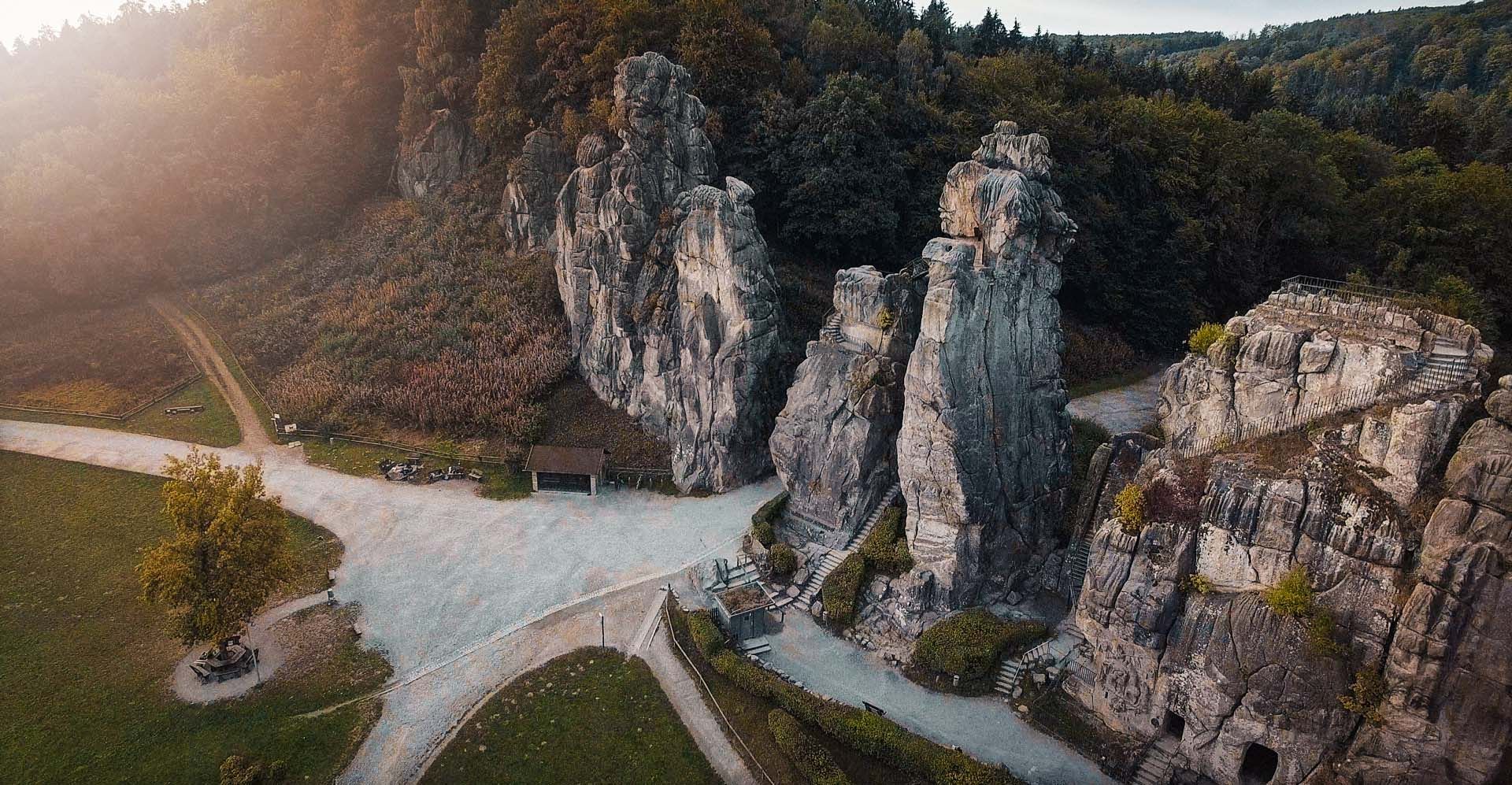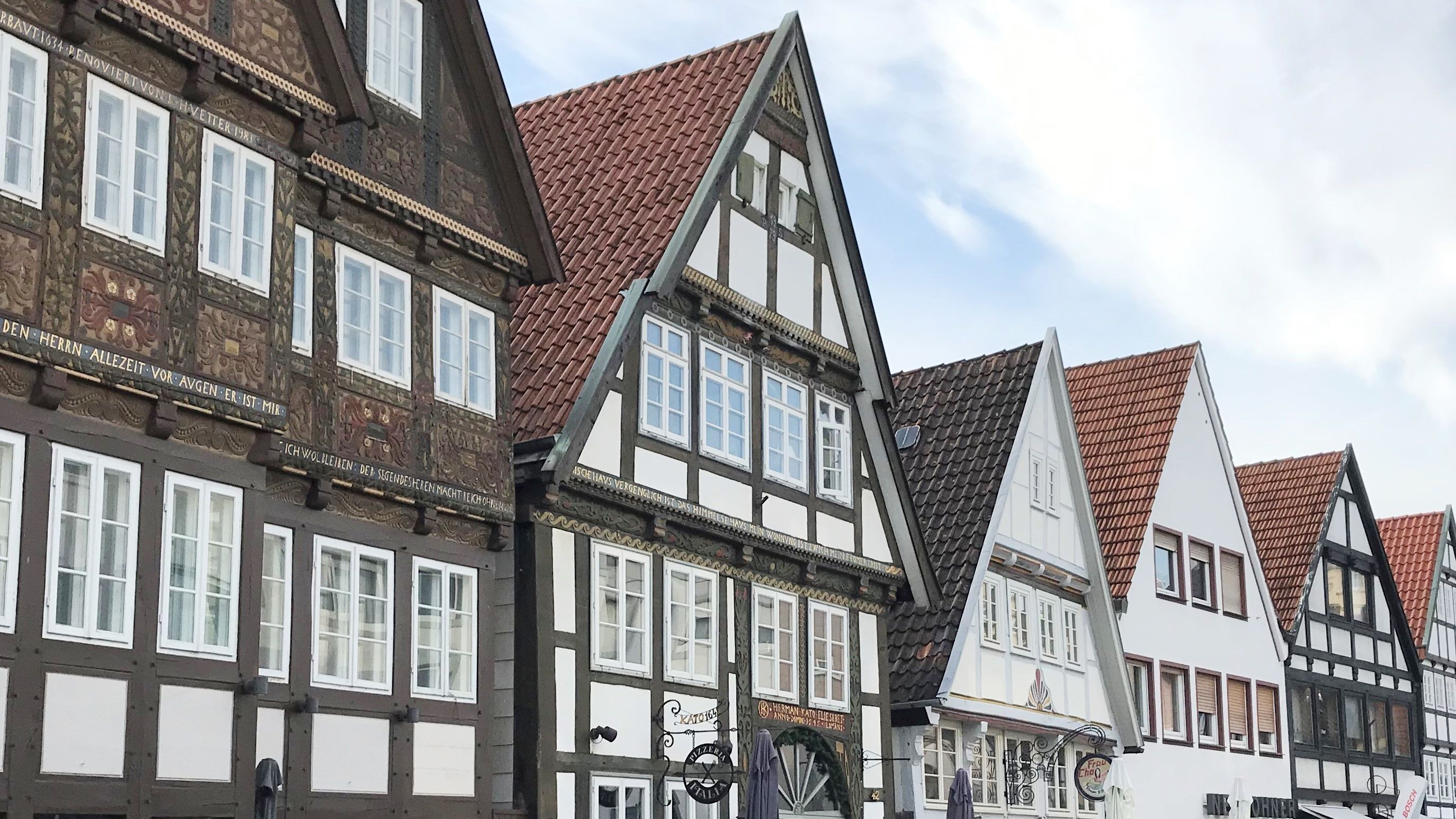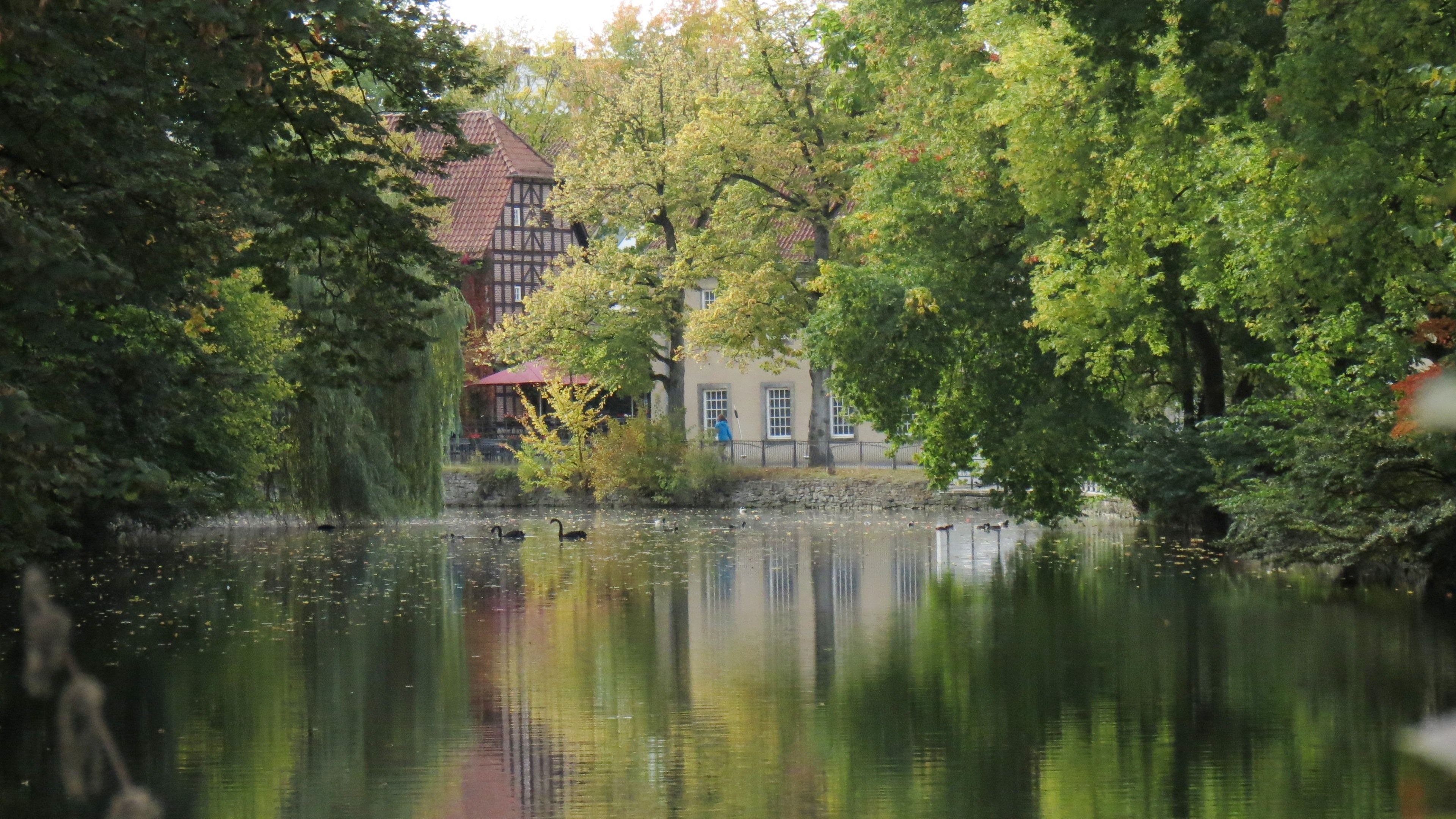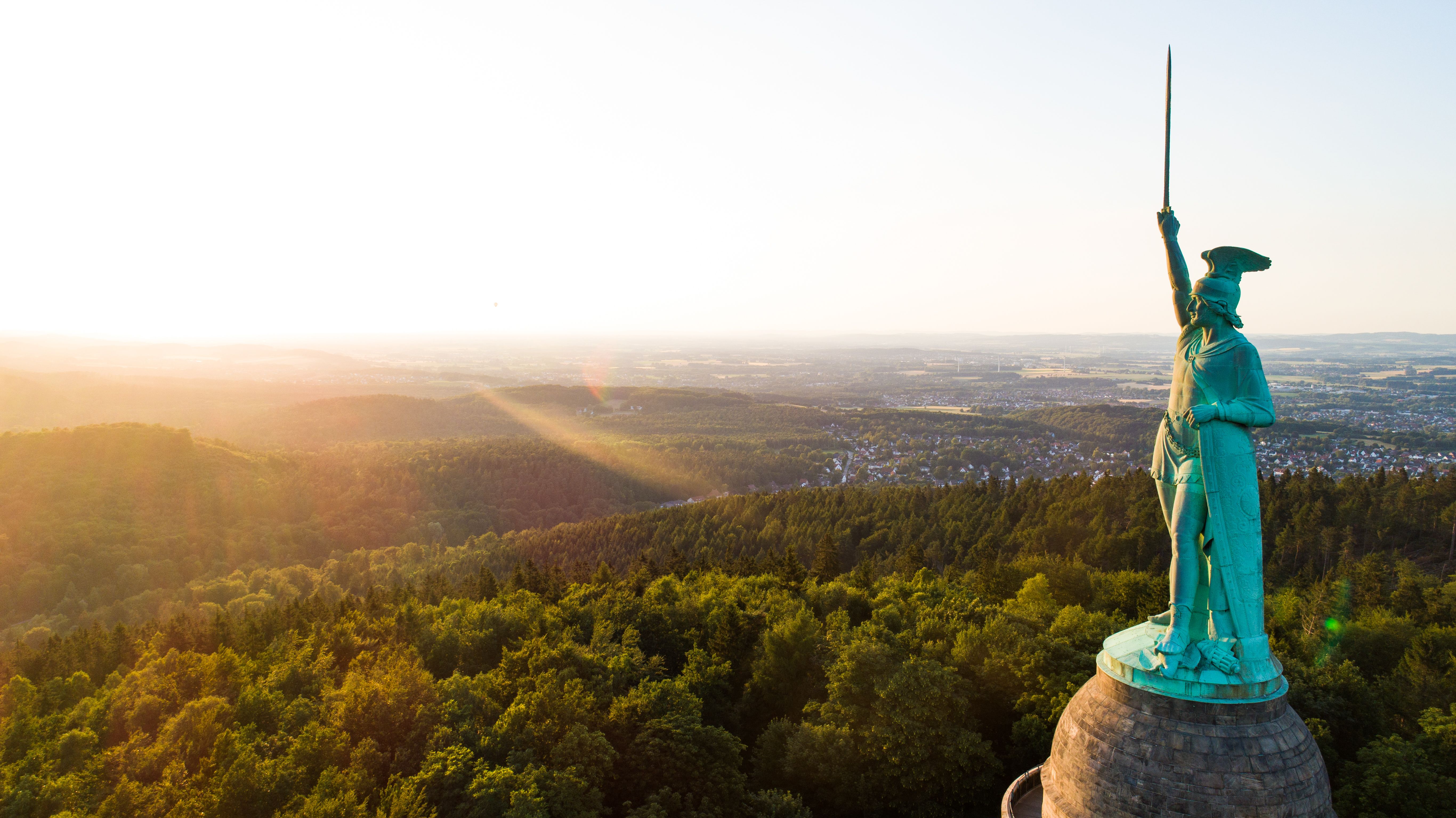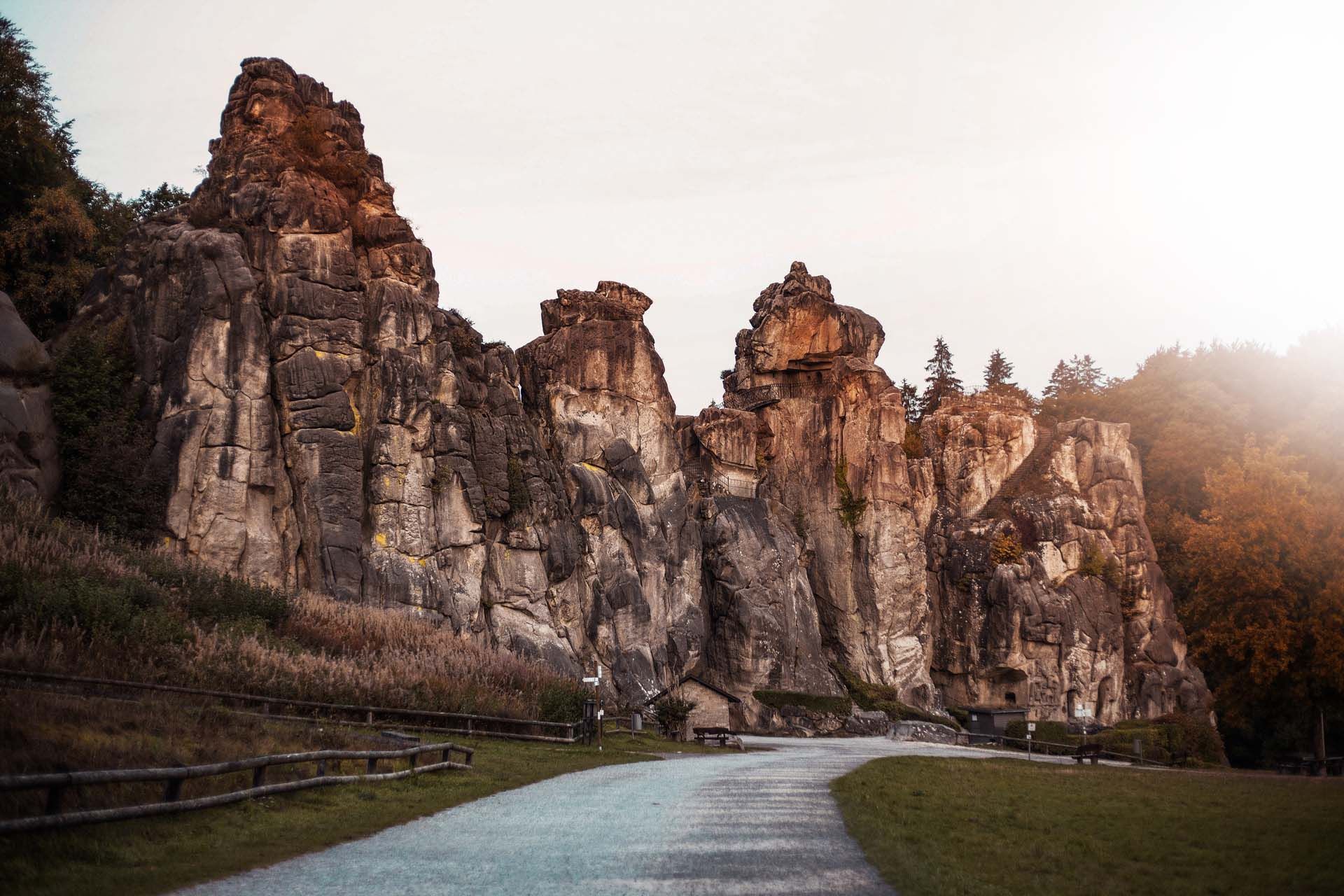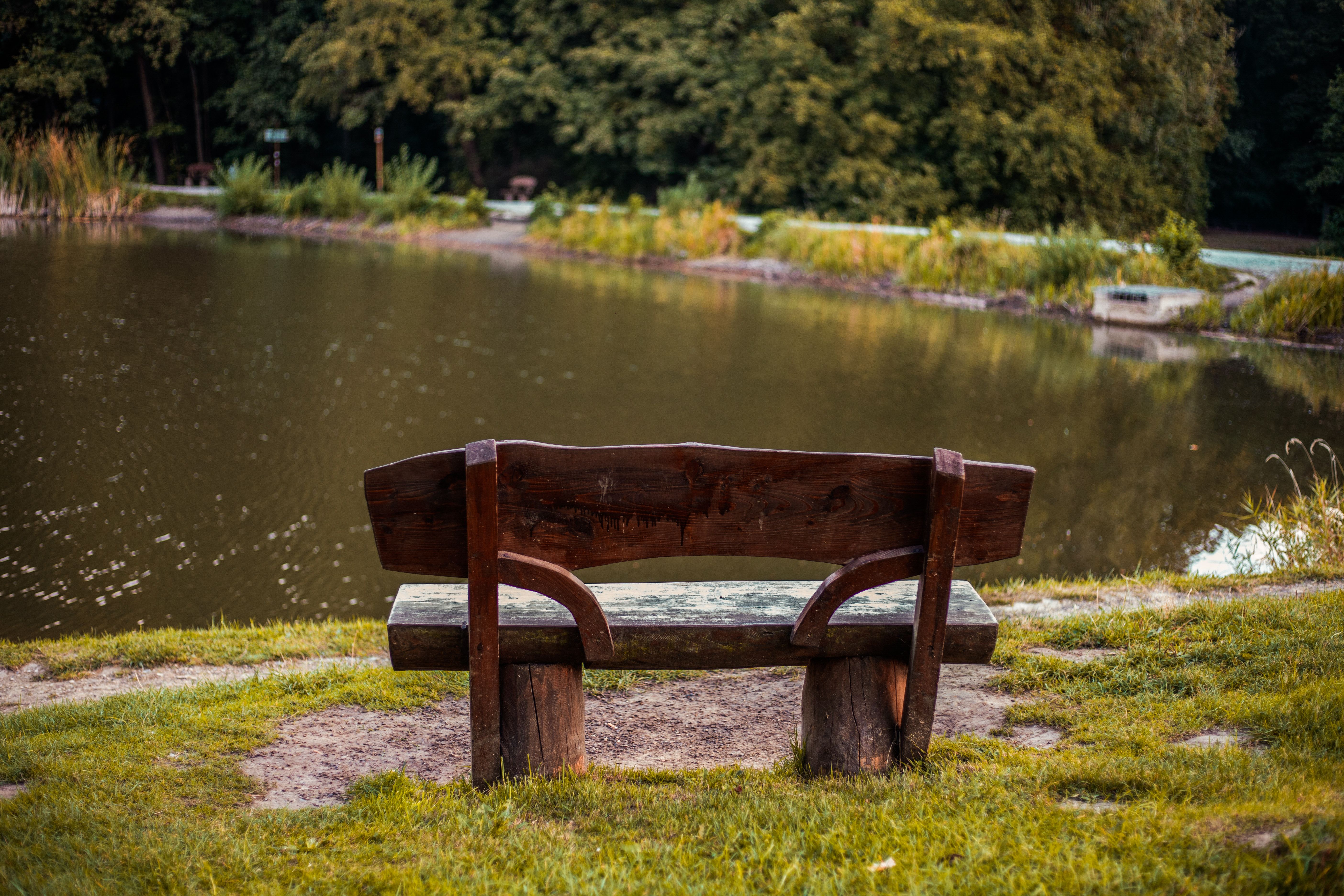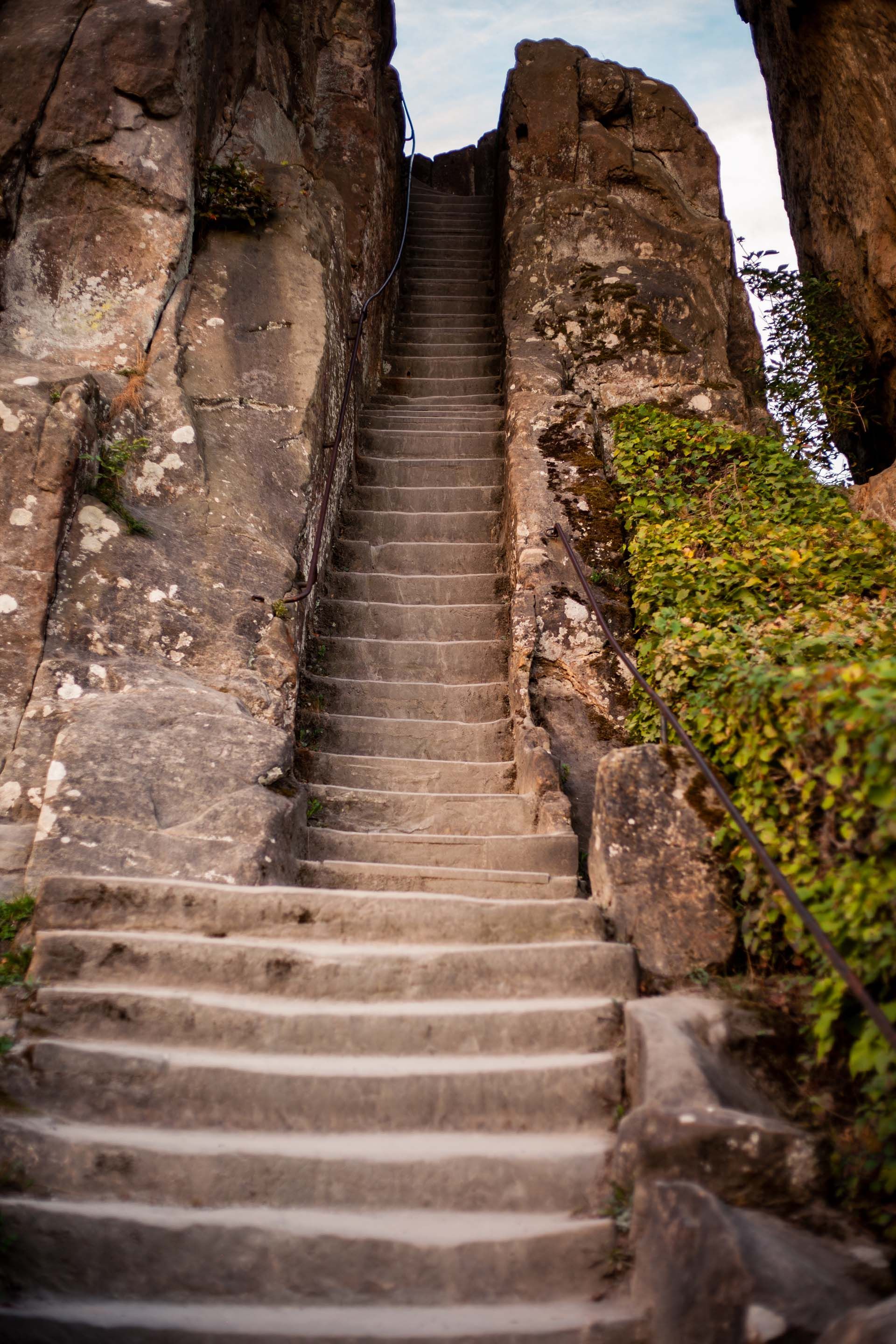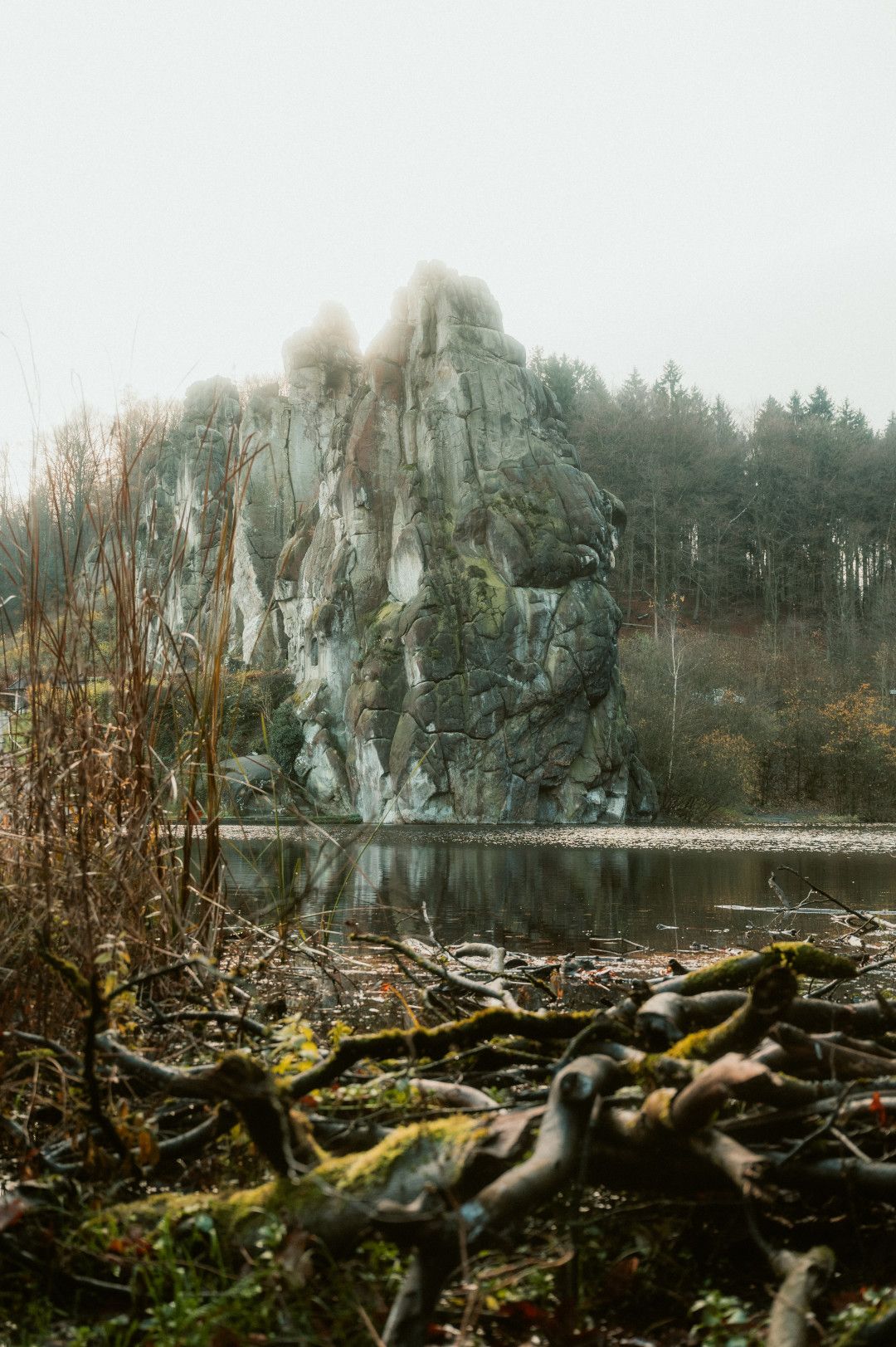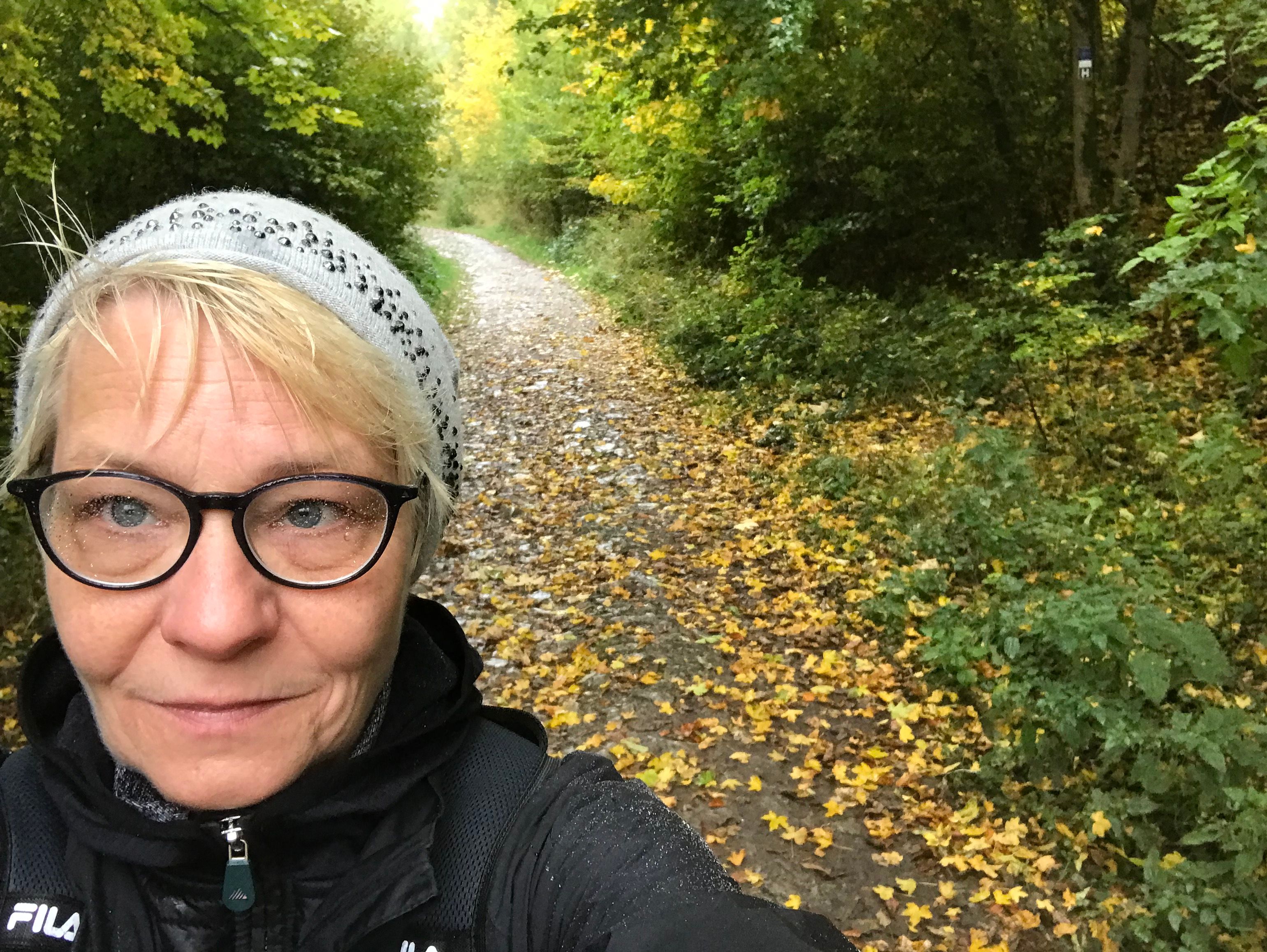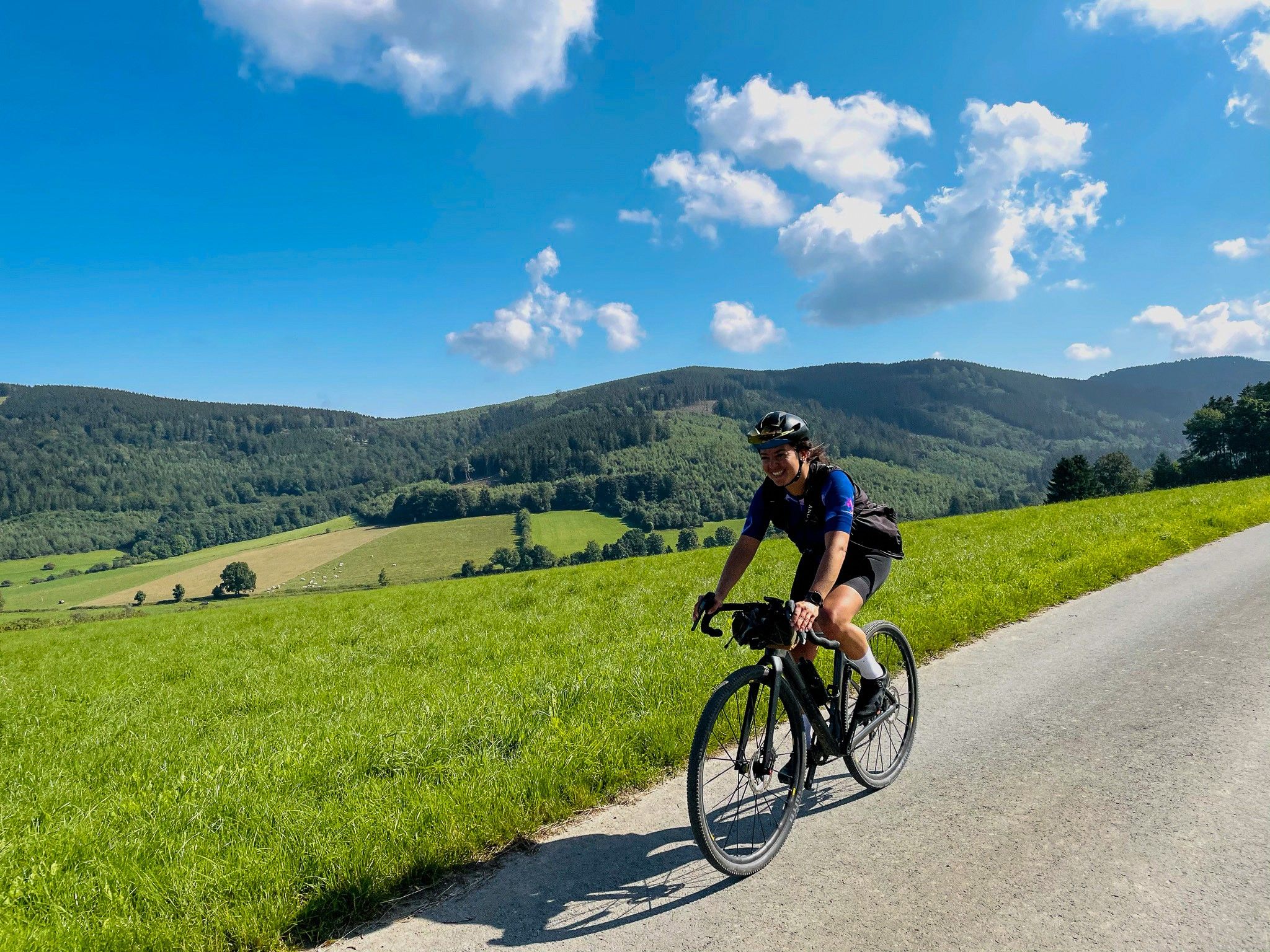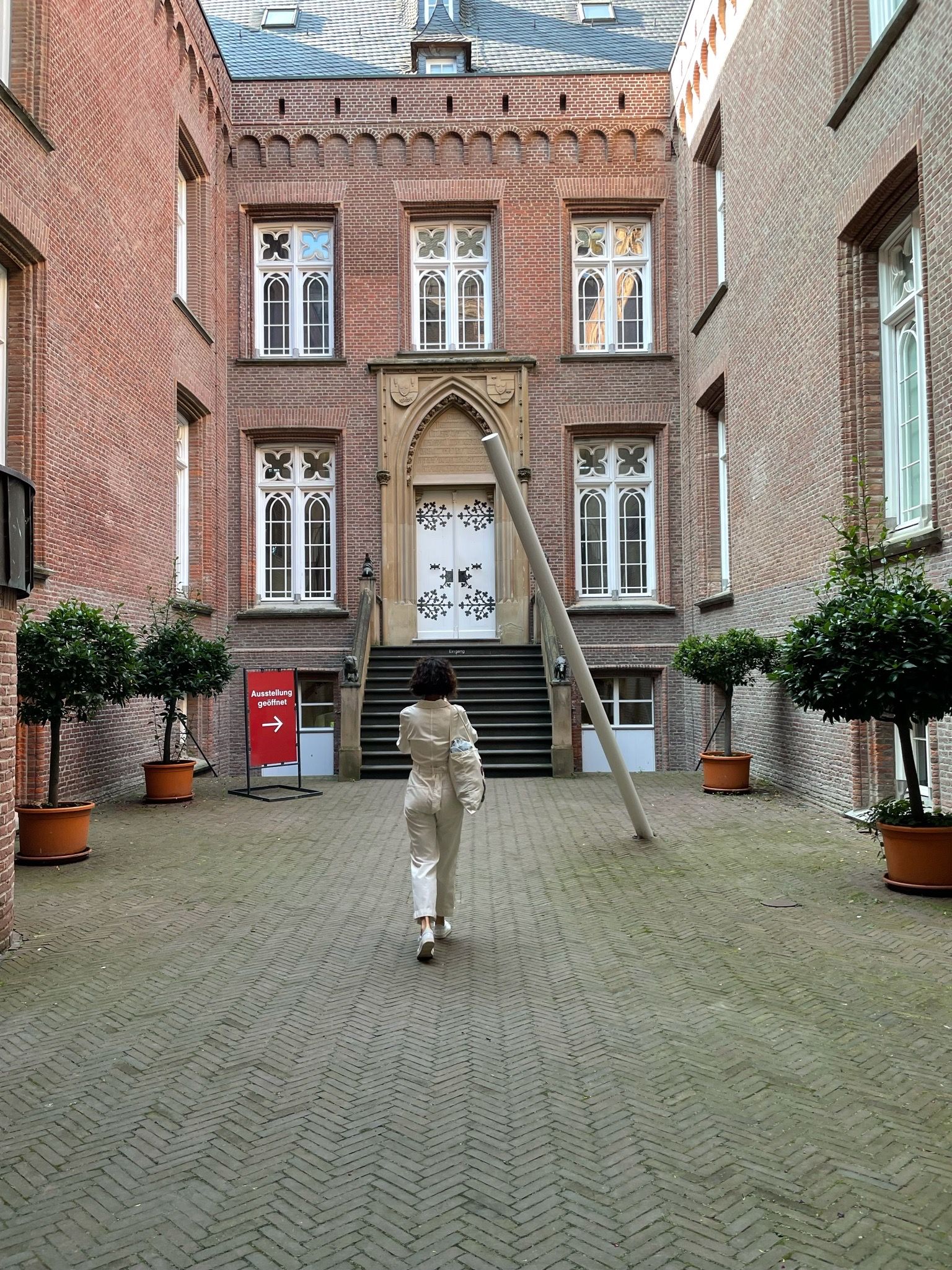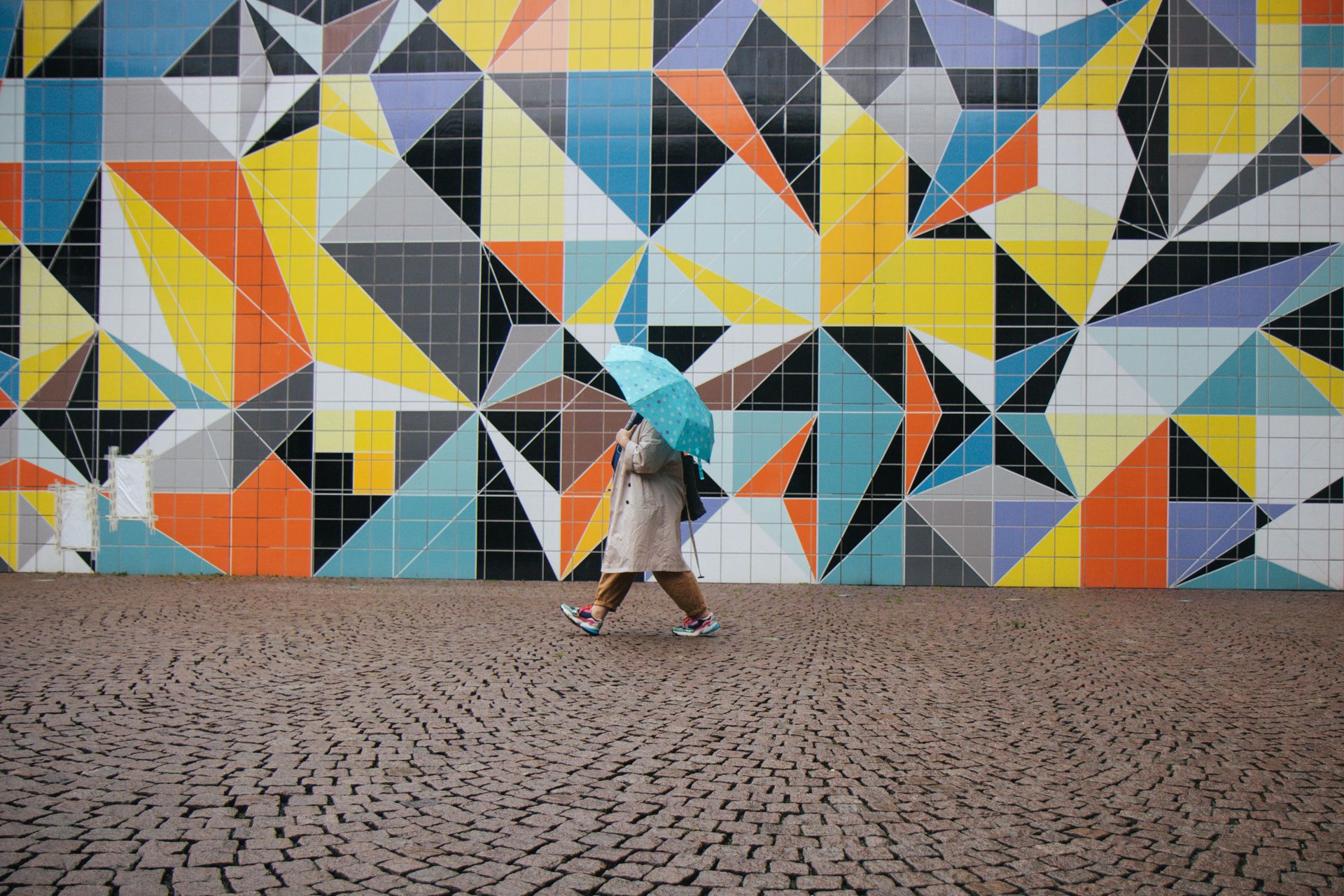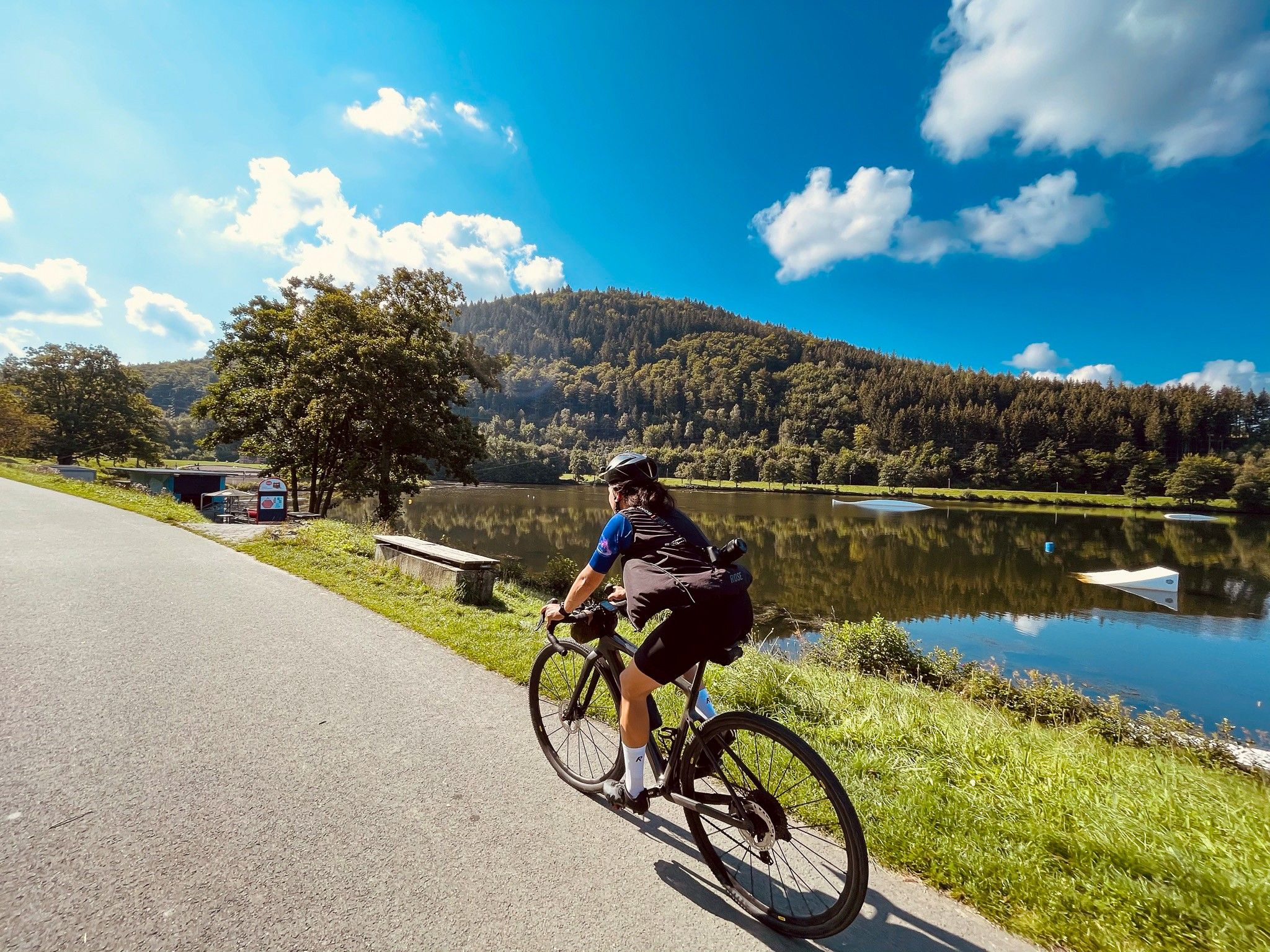Meanwhile, down below, a group of young Englishmen take selfies of themselves and Arminius, who, according to legend, brought the Romans to their knees here. 9.5 kilometres and three hours later, I will see them again. Because after the descent, my real mission for the day begins: a hike on the Hermannshöhen, one of the Top Trails of Germany. I have set myself a section of stage 9, which is considered the most spectacular section of the 226-kilometre Hermann and Egge Trail. This is because it leads over the ridge of the Teutoburg Forest past the Externsteine, the 70-million-year-old rock formations that have been the subject of all kinds of myths and legends since time immemorial. That's exactly where I want to go.
So I set off, always following the white H on a black background. The paths are well-maintained, sometimes narrow, but for the most part very moderate, even for inexperienced hikers like me. I hardly notice that a light drizzle has started in the meantime. The foliage of the tall trees is too dense and the raindrops roll off. But maybe it's just the drops of sweat that occasionally drip down my forehead. The climb is steeper than I expected. Neither the one nor the other bothers me. On the contrary. Rarely have I been so far away in my thoughts as here in the midst of peace and seclusion. Rarely have I been so aware of nature as I am now, seeing toadstools in the wild for the first time ever or looking at my own footprints in the damp forest floor. Is this really me ...?
